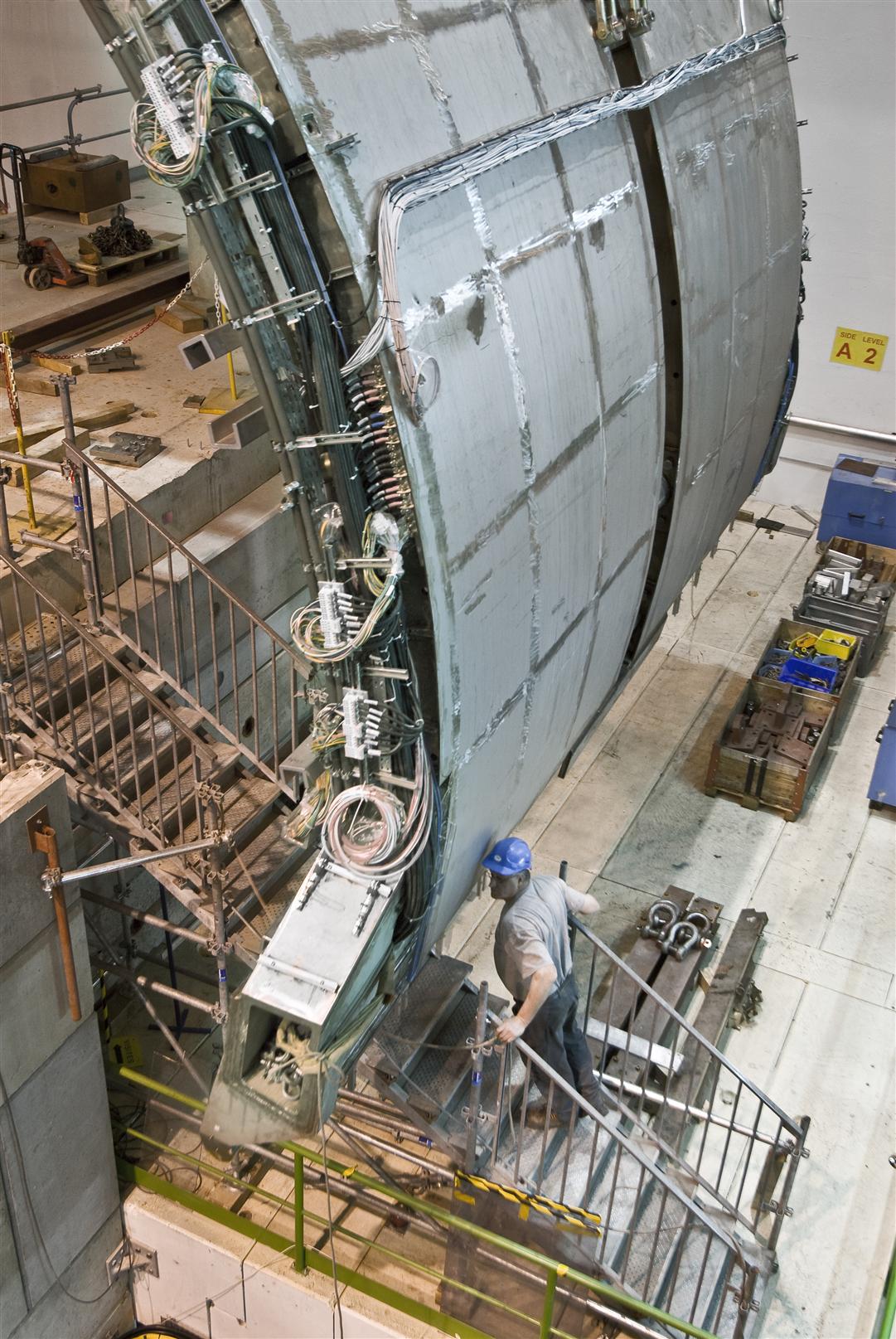The scene is set for ALICE
Now that the electromagnetic calorimeter support and the mini space frame have been installed, practically all ALICE’s infrastructure is in place.
The calorimeter support, an austenitic stainless steel shell weighing 30 tonnes, was slid gently inside the detector, in between the face of the magnet and the space frame.
With the completion of two major installation projects, the scene is finally set for the ALICE experiment…or at least it nearly is, as a few design studies, minor installation jobs and measurements still need to be carried out before the curtain can finally be raised. The experiment’s chief engineer Diego Perini confirms: "All the heavy infrastructure for ALICE has been in place and ready for the grand opening since December 2007."
The next step will be the installation of additional modules on the TOF and TRD detectors between January and March 2008, and physicists have already started testing the equipment with cosmic rays.
At the end of 2007, the last two major detector components were installed - the electromagnetic calorimeter support structure and the device for connecting service networks to the inside of the detector, known as the "mini space frame". Given the dimensions of the calorimeter support structure (30 tonnes, 7 metres high), it had to be transported from Italy in two parts and assembled at CERN in April/May 2007.
These two austenitic stainless steel "half-shells" were welded and bolted together by CERN technicians to give this imposing structure its final curved form. The structure’s design was optimised in order to give it a high degree of inertia. Once the calorimeter is in place, the support will have to bear some 88 tonnes of active components, nearly three times its own weight!
The lowering and final positioning inside the detector constituted major technical challenges for the ALICE team. You don’t go about handling a 30-tonne structure like this without taking the necessary precautions. Numerous tests were done in preparation for the operation, and a couple of walkways even had to be dismantled to free up the passage into the pit.
The structure was then inserted gently inside the detector, sliding in between the face of the magnet and the metal space frame bearing the detector systems in the centre of the ALICE detector. This manoeuvre called for pinpoint precision because, following successive installation operations, there was hardly any room left inside the cavity. At a certain stage there were just a couple of centimeters of clearance between the moving structure and the magnet. Finally, to install the 10 calorimeter modules, the gap between the space frame and the support structure will be barely 50 cm wide.
A fortnight after the installation of the support structure, at the beginning of December, the final piece of the jigsaw was installed: the "mini" space frame, which resembles a giant socket outlet and weighs 14 tonnes. The device is almost 10 metres long and carries all the supply cables for the services required for detector operation (gas, water, electricity, signals). Sitting straight across from the magnet, it connects the inner detector with the outside world.
The final piece of the jigsaw: the "mini" space frame, a gigantic socket outlet weighing 14 tonnes, which brings the services into the heart of the ALICE detector.
"Today we can all be satisfied with a job well done," says Diego Perini. "None of this would have been possible without the tremendous efforts of the ALICE team at Point 2, the members of the transport service and the many contributions from various Groups, in particular TS/LEA and TS/SU. Pretty soon, all we’ll have left to do is install the shielding and then the show can really begin."



